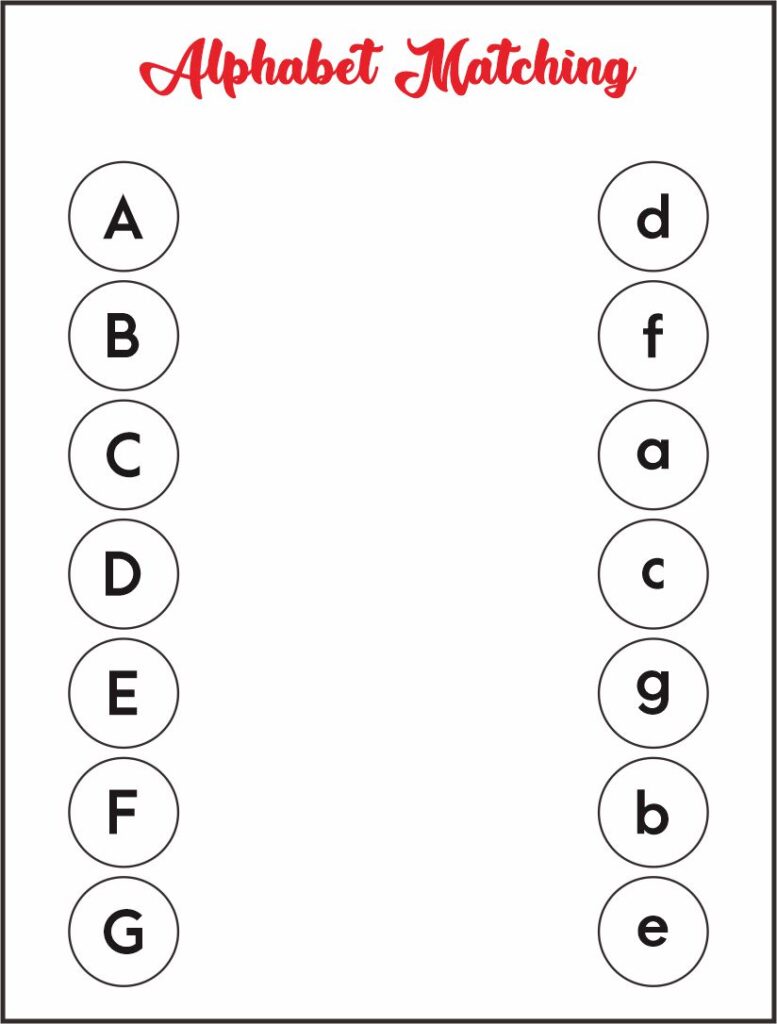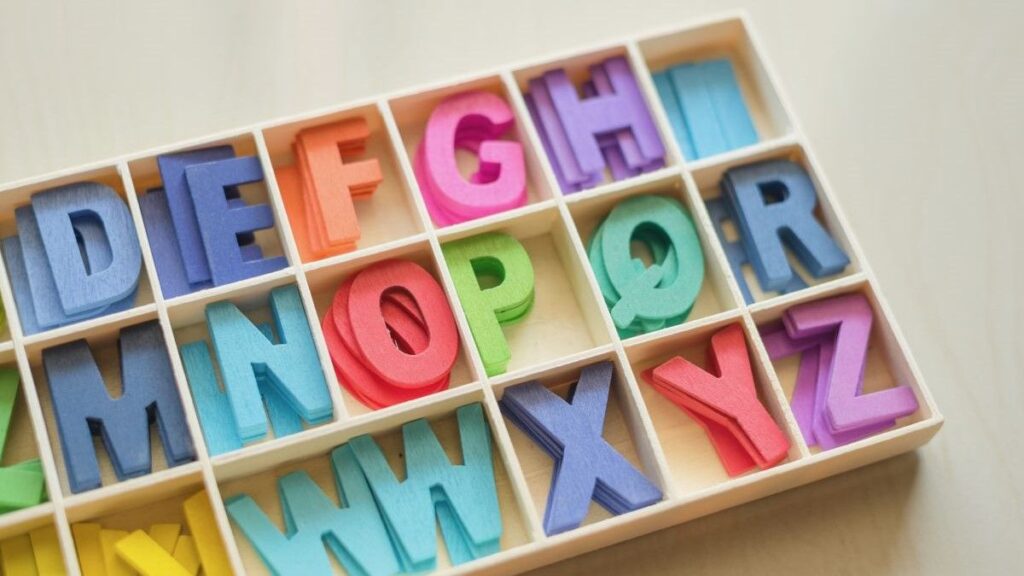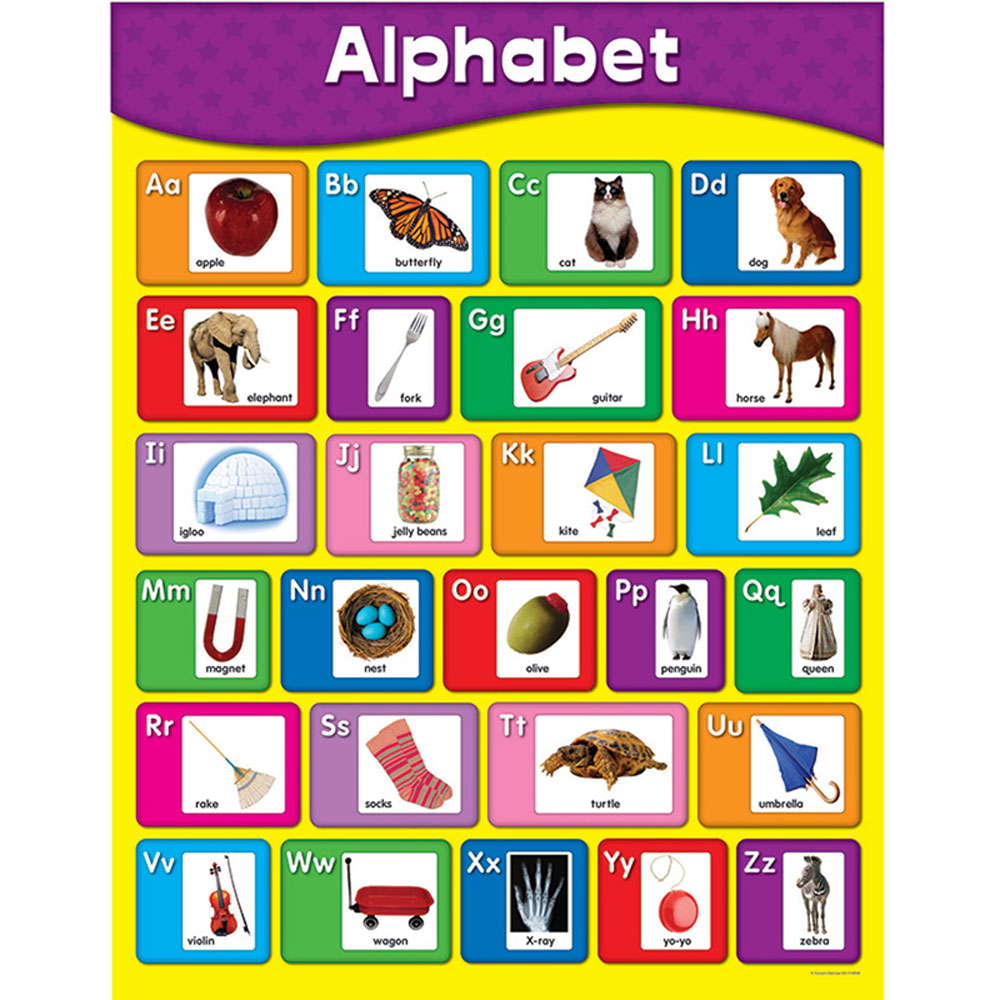
6 Easy Ways to Teach the Alphabet to Preschoolers

The alphabet must be taught to youngsters before they may learn to read. Before youngsters can put sounds together or draw lines to form words, they must first understand what they are. If you’ve never taught the alphabet before, you might find the notion abstract: how do you teach something that comes so readily to you? Teaching letters may be a lot of fun and easy. We’ll show you how to teach the alphabet to toddlers in this post.
1) Sing Songs About the Alphabet

We’re all familiar with the English-language song “A-B-C-D, E-F-G.” That’s a fantastic place to begin. There are, however, other alphabet songs that may spice up your playlist and help youngsters learn the letters in a number of ways.
This page includes a collection of alphabet songs for you to attempt. You may also find letter-related songs on YouTube channels for toddlers and preschoolers, as we mentioned in our post on YouTube channels for toddlers and preschoolers. Videos can provide pictures of items that begin with each letter, and songs can occasionally include sound pronunciations as well.
This early childhood educator emphasizes that children should progress from singing the song to being able to recite and point out the letters without music. So don’t limit yourself to singing!
2) Play Games Where You Match Letters.

It’s simple to set up a letter matching game. You may have a poster board with the alphabet in enormous letters written on it. Separate letter magnets or paper letters the same size as the print letters should be used. Ask the preschoolers to match the letters on the chart with their cutouts. What happens to “A”? Place the cut-out letter “A” on top of the poster board’s printed “A.” Allow them to practice with all of the items.
You may also have an alphabet “arc,” where one end of a half-circle depicts the letter “A” and the other end shows the letter “Z,” as the early childhood educator indicated above. Other letters of the alphabet can be shown in the gaps, but not all of them. Request that the preschoolers arrange their block letters in the correct order, using the pre filled in letters as a guide.
3) Each Week, Start a New ‘alphabet Box.’

You may have seen us mention on Facebook that a letter we’re studying is bringing you a certain week. It may be “C,” in which case you’ll see photographs of us at daycare painting the letter C or learning about creatures that begin with the letter “C.” In preschools, weekly letter themes are frequent.
You may go a step further with your weekly letter curriculum by making a box that children can open to find things that correspond to that letter.
For instance, during the letter “A” week, your preschoolers can open (or even unlock) a box containing an apple, a toy airplane, a toy alligator, an acorn, a safe arrow, and so on. In fact, don’t inform the kids immediately what letter the ‘treasures’ box represents. Ask them if they can figure out which letter they’ll be covering that week just by looking at the items in the box. This might be a fun and creative way to get your kids excited about the next week and work together to find a solution.
4) With Each Letter, Use Transdisciplinary Learning to Improve Letter Connections.

Because repeating a letter over and over might become tedious, you can spice things up by including relevant teachings. You might begin by focusing on a single week’s letter. Then teach interdisciplinary subjects that are still related throughout the day.
If you’re learning about the letter “R,” for example, you may also learn about the color “red,” because it begins with “R.” ‘What items are red?’ ask the kids. You can learn about apples if you are on the letter “A.” We’ve done this previously, where we teach kids about the many sorts of apples, as well as how seeds are contained within an apple, and so on.
This blogger provides a list of projects that you may use to supplement your learning. A hole punch, for example, can be used to produce holes for the letter “H.” The circular form can then be learned as a result of this. You get the picture…
5) If You’re Teaching the Alphabet with Flashcards, Make Sure They’re Reasonable.

The alphabet is all about memorizing, therefore flashcards are a terrific way to help with that. However, this teacher advises that pre-made flashcards might be quite perplexing at times. If you’re teaching the letter “D,” and there’s a picture of something that just utilizes the sound of “D” anywhere in the word but doesn’t begin with “D,” you can see how even grownups would be confused.
Remember, you’re not teaching phonetics, complicated vocabulary, or pronunciation at this point. First and foremost, youngsters must be able to identify and understand the letters. Use the most basic flashcards possible, with the most basic images of things and animals that children can identify.
However, you may wish to use lowercase and uppercase letters in your flashcards at times…
Yes, this may be perplexing for very young students, especially when the upper and lowercase letters appear to be so dissimilar but are referred to as the same thing. However, if you’re utilizing a set of magnets, you can just use their uppercase equivalents, which is OK (they may only come in that form). You can start with the basics for very young students.
Just remember to show them both lowercase and uppercase letters at some point during their alphabet learning journey.
6) to Help Preschoolers Learn Their Alphabet, Eat Foods that Are Shaped Like Letters.

Why not have a baking session with the preschoolers while we’re on the subject of interdisciplinary alphabet learning? They may prepare a fun and tasty snack with letter-shaped cookie cutters. Meanwhile, the baking activity may be used to teach a variety of concepts. The list continues on and on: chemistry, cookery, nutrition, and so on.
Try commercially available letter-shaped cookies if you want to take it easy. These are available at IKEA. Request that your child or preschooler name the letter of the alphabet that they are going to consume. It may be a reward for doing it correctly if you eat it!
There’s also “alphabet soup,” which consists of noodles shaped like letters. With these edible letter manipulatives, meals can be both entertaining and informative.
So there you have it: six simple techniques to teach preschoolers the alphabet. They could even be enjoyable for you! Hearing small children speak letters and guess which object corresponds to each letter is quite endearing. Take advantage of every teachable opportunity to help your preschoolers notice letters in the world around them as they learn the alphabet.
Ask the kids if they can find their letter of the week on a street or building sign while you’re on a field trip. See if they can detect the letters you’re reading to them if you’re reading a book. Continue to emphasize letter recognition throughout the day so that the lessons are ingrained in their minds.






